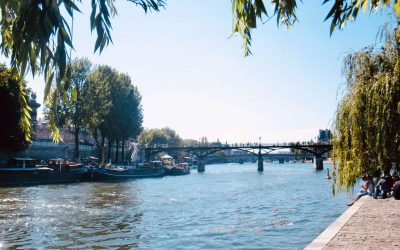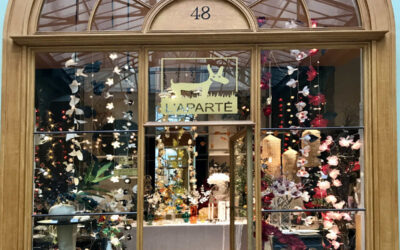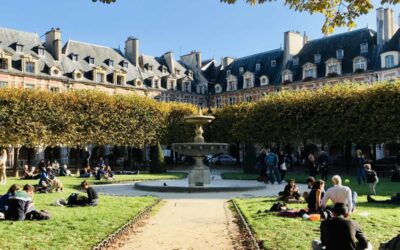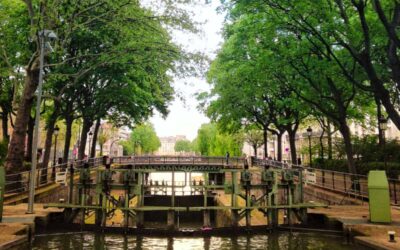The first hint of its marvel is its shape. It isn’t square or round, or in any way symmetrical. Instead, when you visit Chateau de Chantilly (just outside of Paris), you will notice that it is an odd obtuse triangle. It has odd angles, no clear front entrance, and a strange partial courtyard off to one side.
From the pyramids of Egypt, to the Mayans of Central America, to England’s Buckingham Palace, the grand architectural buildings have always found beauty in symmetry.
And this is usually the case with the various châteaux around Paris and royal palaces that were all influenced by each other.
But the beauty of the Château de Chantilly is that it exists at all. This guide covers the sad history of the Château, what is there to see inside, how to get there and whether it is worth the visit from Paris.
Facts & History
i) Middle Ages and Renaissance
The original Château was first constructed in the 11th century, not as a beautiful ornament, but as a defensive fortress on the Nonette river valley. The idea was to control the road from Paris to the royal town of Senlis.
Senlis is where the medieval Capetian kings had a home, starting with Hugh Capet, and so it was important to protect the road. But the area was filled with marshland and unstable.
So its medieval architects in the 11th century managed to dig until they hit a large rock that was stable enough to build a castle. And it is on this land that the castle today stands.

Since the rock was an odd shape, the castle that was built was also an odd shape, to maximize space as best they could. The Grand Chateau building which is triangular was built in 1528.
An additional building, known as the Petit Chateau which was added to the existing structure in 1560 in an L shape, to form a small courtyard.
But this was not a house for a French monarch. Instead, the château was owned in the middle ages by the noble Montmorency family who owned the castle at that time.
The castle passed through several hands, including the famous Grand Condé, a cousin of the Sun King Louis XIV. Chantilly was his oeuvre d’art in the competition for “Best Castles in France” with the other chateaux being built at the time around Paris.
The other contestants in the competition were the Palace of Versailles by the 22-year-old Sun King Louis XIV and Château de Vaux le Vicomte by Nicolas Fouquet, a minister in the King’s court.
The Grand Condé succeeded in building his dream, but bad times were ahead. The Château was completely destroyed during the French Revolution. The monument you see today is a reproduction. Even the stones from the original castle moved and reused in the nearby town of Chantilly.
ii) Henri d’Orléans and the Château’s reconstruction
The current edifice you see today is all due to an 8-year-old boy. Henri d’Orléans, Duke of Aumale, was the 5th son (9th child!) of the last king of France Louis-Philippe.
Any other 5th son would expect to inherit nothing, but our Henri had a rich godfather, who had lost his own son.

At 8 years old in August 1830, Henri inherited the equivalent of 200 million euros and the Château de Chantilly from his uncle and godfather, a descendent of the Grand Condé. I’m not sure what the King’s 4 older children thought, but as the chateau was in ruins at the time, I presume they were not too upset!
Dear ol’ Henri set about repaying his patrimony. Within 10 years he had resurrected Chantilly from the dead, reconstructing the Château, the gardens and its interior to its original form.
He purchased antiques and negotiated for any valuable art that were found at Versailles or the Louvre to be returned. But it was not a happy ending.
Unfortunately, Henri experienced the same sadness as his godfather and had several children who all died in infancy. And so in his will, he bequeathed the Château to the Government of France, its current owner.
Henri left two caveats: “Do not change anything, and let no one else live here”. And this is why the Château is here today for us to enjoy. (Although, current members of the House of Orléans still have their claims.)
Inside the Château
As I said before, the layout of the Château is a bit odd. When you are looking at it, you are not actually certain which is the front. The grand entrance is actually on 2nd floor and the bedrooms are downstairs.
This is due to the odd rock that they had to build on, which used to be an island (for defensive purposes) when it was first built, but today is connected to dry land.

Inside the Château is the 2nd largest collection of antique paintings in France, after the Louvre Museum in Paris. This includes 2 works by the great Raphael, The Three Graces and The Madonna of the House of Orléans.
There is also Raphael’s Madonna of Loreto, which until 1976 was thought to be a copy, until museum curators spotted an old mark on the painting and realized it was an original. (How about that on an episode of BBC’s Fake or Fortune!)
Henri d’Orléans was also a bibliophile and the Château’s library is second only to the National Library of France. It holds over 60,000 volumes including 1,500 manuscripts and 17,500 printed documents on all sorts of subjects, dating from as early as the 11th century.

It also holds what is considered the most beautiful manuscript in the world, The Très Riches Heures of Jean, Duc de Berry. Unfortunately, you can’t browse through it since it is a bit too precious for your greasy fingers! A digital copy can be seen on Wikipedia.
The Gardens
The style of garden is called “Jardin à la française”, and is almost entirely due to one man, André Le Notre (link in French). The man would become known as the personal gardener of the Sun King Louis XIV.
The beauty of the gardens of Versailles and Vaux le Vicomte is not just the actual plants planted, but their system of irrigation. Huge canals had to be built to be able to water the plants automatically, and large fountains to entertain the spectators.
This was all done with hydraulics after all electricity had not yet been invented. While André Le Notre’s Palace of Versailles and Vaux le Vicomte gardens were magnificent, it is at Chantilly that he really faced a few challenges.

The canal at Versailles was only 1km, while the one at Chantilly had to be over 2.5km. In addition, he was building on marshland, which is not the case at the other two chateaux.
Luckily a lot of the engineering was preserved through the French Revolution and is fully restored today.
One interesting point as you walk through the gardens is the number of wedding parties and photographers that you see, especially if you are there on a weekend. (I think we crossed about 5 in one afternoon. For my kids this was real-life prince and princesses come to life in a castle!)
☞ READ MORE: Visit Chateau de Fontainebleau: the royal house of the Kings
The Stables and Horse show
These are not just simple horse stables, but are known as the Grand Écuries, and are thought to be the largest in Europe. Along with a horse-related museum, there are also special shows regularly at 14h30 in the afternoon.
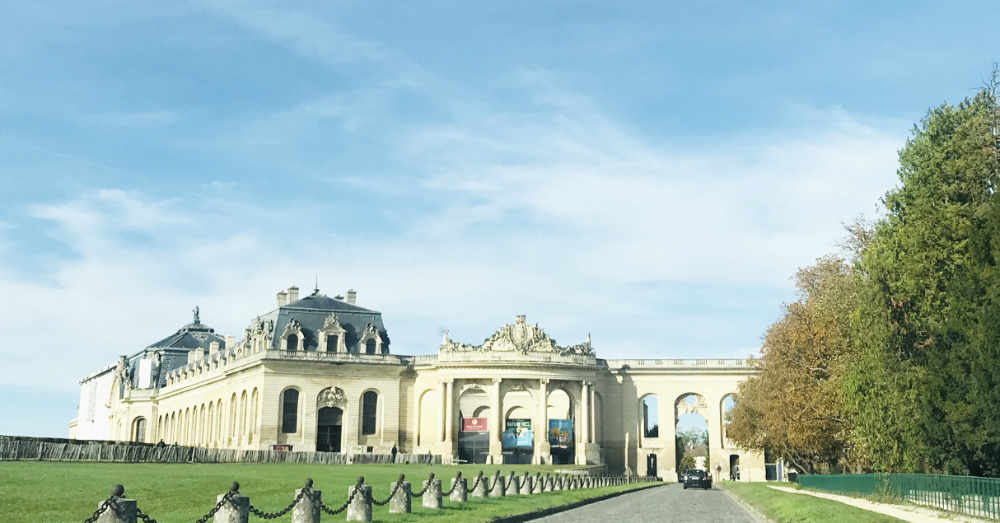
The shows change regularly so consult the agenda when planning your visit. I’m afraid I don’t have any photos of the show, as photography is not allowed inside so as not to disturb the horses.
Getting to the Château from Paris
From Gare du Nord station in Paris, you can take the TER to get to “Chantilly-Gouvieux” stop within 25 minutes. It is quite easy to get to Chantilly, with the Château having arranged a special TER train ticket for €25 that includes transport and access to the castle.
From there, there is a free bus to the Château, or it is about a 25-minute walk. Or if you have access to a car, it is about an hour’s drive from Paris, depending on traffic conditions and your departure point.
Alternatively, you might prefer to take an organized tour like this one, that will pick you up and drop you off in Paris.

The town of Chantilly
The town of Chantilly is world-famous for two things: Chantilly lace and Chantilly cream. So it would be a shame if you came all this way and didn’t have a wander through the town and have a waffle with some fresh Chantilly cream! (You can read more about foods and drinks to try in Paris here.)
The town also has a beautiful Museum of Lace, which is open on Friday to Sunday between 14h-18h, and also by special reservation.
☞ READ MORE: 40 Things to do on that Ultimate Trip to Paris

Are you planning a trip to Château de Chantilly, or have you already been? If you enjoyed that article, you may want to read about more amazing day trips from Paris. A bientôt!


